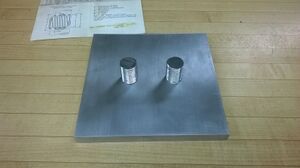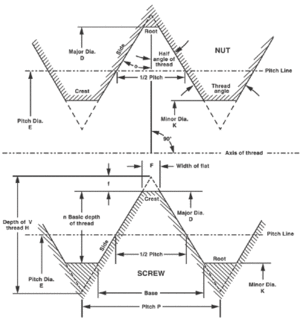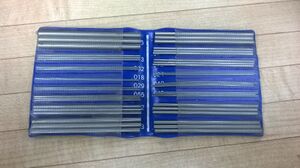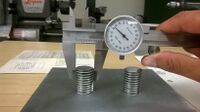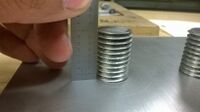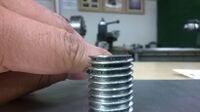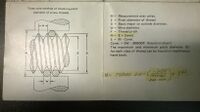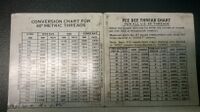Diameter Pitch
Thread Pitch Diameter Display[edit | edit source]
A display with 2 studs of the same thread pattern and pitch diameter but with a varying minimum and maximum diameter of the thread.
Purpose of Project[edit | edit source]
Two threads with different diameters but having the same pitch diameter might visually appear to be of different sizes. However, both are essentially the same and will fit in the same tapped hole (provided the hole is tapped according to the respective size). This can cause confusion as two threads with different pitch diameters but the same thread diameter will appear to be of the same size but will not fit in the same tapped hole. Therefore, when working with threads it is important to fully understand this concept. We aim to achieve this visually and logically in this page.
Thread Diameter vs Pitch Diameter[edit | edit source]
Thread Diameter[edit | edit source]
There are two different thread diameters. The outside and inside thread diameters.
Major Diameter:The largest diameter of the thread of the screw or nut. When working with thread on screws the common term used is "outside diameter" and on threads of a nut the common term is "full diameter".
Minor Diameter:The smallest diameter of the thread of the screw or nut. When working with thread on screws the common term used is "core diameter" and on threads of a nut the common term is "inside diameter".
Pitch[edit | edit source]
The distance from a point on a screw thread to a corresponding point on the next thread measured parallel to the axis. In inches for example, the pitch is calculated by 1 divided by the number of threads per inch.
How to Calculate Pitch[edit | edit source]
| Example | Description |
|---|---|
| 1. Calculate the outer thread diameter.
| |
| 2. Calculate the threads per inch.
| |
| 3. Calculate the wire diameter.
| |
| 4. Calculate M.
Use Equation to calculate M. | |
| 5. Final Step.
|
